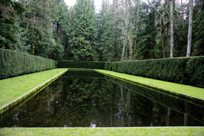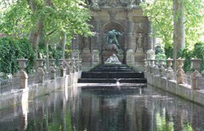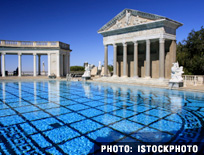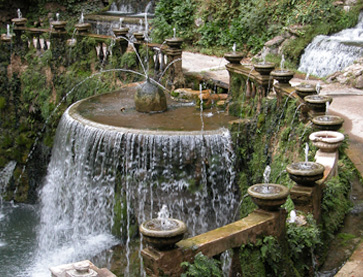Travelogues & History
When I travel from Los Angeles to visit my mother, who lives across the sound from Seattle on Washington’s beautiful Bainbridge Island, I always do my best to stop by the Bloedel Reserve while I’m there. The Reserve is an internationally renowned public garden that puts its emphasis on
Maria de Medici moved from Florence to Paris in 1600 as the wife of Henri IV, King of France. Homesick for her native city and caught in an unsuccessful marriage, she pestered her husband to build her a mansion and grounds that would remind her of the
Through the years, I've spent lots of time in Philadelphia, both on business and visiting with family and friends scattered throughout the area. I've been there so many times, in fact, that I started hunting a bit farther afield for
Aided by the fact that my sister lives within easy driving distance of Mill Run, Pa., I've visited Frank Lloyd Wright's Fallingwater several times through the years and have had the good fortune to see it in spring, summer and fall. It's an amazing place and has been documented with
Back in 1949, a prominent couple living in Litchfield County, Conn., decided they wanted to build a contemporary-style home that would stand out among the classically styled residences that marked the area. After conducting extensive research, they retained the renowned Bauhaus architect and Modernist artist Marcel Breuer. The home Breuer eventually designed for Leslie and Rufus Stillman pays testimony to the stark beauty of minimalism: The daring, box-shaped, two-level structure featured an array of contemporary elements and appointments, not least of which is a large, rectilinear swimming pool accessed by a dramatic, cantilevered staircase from the home’s upper level. (Things worked out so well here, by the way, that this was just the first of three Breuer homes commissioned by the Stillmans.) The couple avidly collected modern art, so the home became a showplace for a number of original pieces by several of the mid-century period’s greatest artists, including Alexander Calder. Although perhaps best remembered today for inventing the mobile, Calder was asked in this case to paint an original mural on a large block wall set above the deep end of the pool. The results were, in a word, spectacular. But let’s fast-forward 60 years: By 2010, the Stillman House was in need of restoration, and even the vivid Calder mural had cracked and eroded from exposure to the elements. Happily, this proved a turning point, as the property’s new owners announced their intention to
In a previous edition of WaterShapes EXTRA!, I discussed the merits and deficiencies of Hearst Castle, and was quickly rewarded with a torrent of other peoples’ opinions. In all of the many comments I’ve seen, one thing is clear: Hearst Castle is
When Chicago Botanic Garden opened its gates in 1972, those on hand faced the same situation as those who come today: They will never see nor experience the garden alike on any two occasions. For decades, we have personally and carefully watched this remarkable property grow. Along the way, we’ve have shared some of the most profound experiences we’ve ever had in our lives: Both the water elements and the gardens constantly conspire (in the literal sense of the word), breathing as one to create spaces of remarkable beauty, tranquility and diversity. It is truly our slice of heaven on earth. For years now, we have visited the Garden almost every week to refuel our bodies and refresh our minds. We’ll generally start with a light lunch at the Garden Café, sometimes in the company of a client or with work materials we enjoy discussing in this stimulating environment. Part of the joy we experience comes from
I just don't get Hearst Castle. Why should we celebrate the gross-scale purchases of historical artifacts and period-inspired structures by a wealthy American whose main pleasures seem to have involved amusing himself and overwhelming others? I am willing to concede that Hearst's San Simeon compound and collections impress
If you're looking for a destination that includes, all in one place, several of the most enduring and influential watershapes of all time, you couldn't go wrong in visiting Villa d'Este — without question one of the





















